Nokia 6 review: A great phone with one major drawback
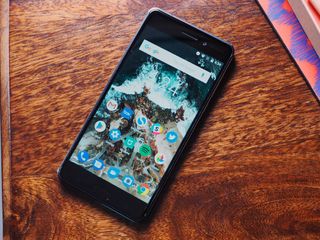
Nokia announced its return to the smartphone segment earlier this year, albeit in a new avatar: instead of manufacturing phones directly, it licensed its name exclusively to HMD Global, a Finnish company made up of ex-Nokia staffers. HMD Global would take care of the design of the phones, and the devices themselves would be built by Foxconn.
Under the new partnership, HMD Global rolled out three devices aimed at the budget segment: Nokia 3, Nokia 5, and the Nokia 6. The company also launched its flagship phone, the Nokia 8 late last month. We'll talk a lot about the Nokia 8 in a few weeks, but for now, we're going to take a look at the Nokia 6, Nokia's best showing yet in the budget segment.
HMD Global's decision to focus on the budget segment wasn't without merit. After all, the entry-level Lumia 520 dominated Nokia's sales charts for several years, and the company's focus on emerging markets like China and India allowed it to build a loyal user base in both countries. That's the target audience for the Nokia 6: customers from the Windows Phone days that have been clamoring for a device with Nokia's hallmark design running Android. The Nokia 6 delivers on that promise, but the device isn't without its drawbacks.
Hardware

Nokia has a storied history when it comes to design, and the Nokia 6 continues that tradition. The aluminum unibody design combined with chamfered edges make this one of the better-looking phones in this segment. The antenna bands are discreet and are tucked away at the top and bottom of the phone. If you're using the black variant, you'll be hard-pressed to notice them.
It's great to see Nokia going after the same segment it attracted in the Windows Phone market.
The overall design language is classic Nokia, and that build quality is right up there with the best phones in the market. That said, the phone has huge bezels at the top and bottom up front, making it taller and wider than most phones in this segment. The Redmi Note 4, for instance, also has a 5.5-inch screen, but it isn't as tall as the Nokia 6.
The sheer size combined with the flat back makes it uncomfortable to use the Nokia 6 one-handed. The power and volume buttons are located on the right, and they're not as tactile as the ones you'd find on the Redmi Note 4 or the Moto G5. Furthermore, the lack of a textured button for the power key means you'll end up hitting the volume down key when you're trying to switch on the display.
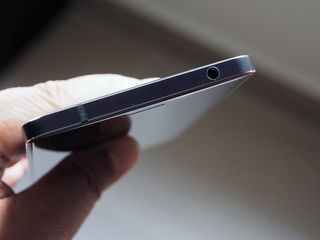
Thankfully, the Nokia 6 has a 3.5mm jack at the top of the device. What's not so great is the Micro-USB port at the bottom, which is starting to show its age. Round the back, the horizontal camera housing is reminiscent of the Lumia days, as is the Nokia logo emblazoned across the middle.
Be an expert in 5 minutes
Get the latest news from Android Central, your trusted companion in the world of Android
The camera sensor protrudes slightly from the body, making the phone wobble when you're using it while laid flat on a surface. And while the Nokia 6 is made out of metal, it has a matte finish that makes it easy to grip the device, and the coating also does a great job of preventing smudges across the back.
The Nokia 6 is one of the best-looking budget phones available today.
The Nokia 6 comes with capacitive navigation keys, with the back button located on the left, overview button on the right, and a home button in the middle. The home key has a fingerprint sensor, but the surface area is limited. There's a lot of wasted space on the bottom bar, and HMD could've done a better job of utilizing that by slotting in a larger home button. That said, the sensor itself is fast and doesn't pose any problems, as long as you get the placement right.
Overall, the Nokia 6 is one of the best-looking phones in this segment, and like Nokia devices of old, it's incredibly tough. The phone is definitely built to last, and if you're looking for a device that brings the classic Nokia design aesthetic to the world of Android, you won't be let down by the Nokia 6.
Coming to the display, the 5.5-inch LCD display on the Nokia 6 is one of the better panels in this category. Sunlight legibility is excellent, and I didn't have any issues reading text when outdoors. You don't have the option to adjust the color temperature, but the default setting should be plenty good for most users. Colors are accurate and vivid, and viewing angles are great.
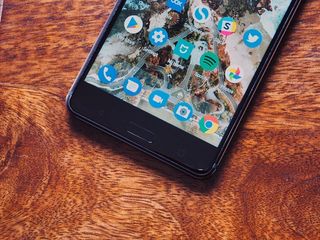
The phone also has dual front speakers, with the earpiece doubling up as a secondary speaker. The second speaker certainly improves the experience when you're watching videos, but the sound itself coming out of the dual speakers isn't as loud as what you get on the Redmi Note 4.
Things take a turn for the worse when we come to the performance side of things. The Snapdragon 430 is a capable chipset, but it doesn't do a great job of driving the Full HD display.
The Nokia 6 would have been a much more competitive device had it featured the beefier Snapdragon 625, a staple of the budget segment. As things stand, you're bound to notice a lot of lag and stutters during everyday usage, including mundane things like navigating the interface and browsing the web. You do get 3GB of RAM and 32GB internal storage, and there's also a microSD card slot if you're looking to extend storage.
As for the battery life, the 3000mAh battery manages to deliver a day's worth of juice with around three and a half hours of screen-on-time on average.
Software

All Nokia devices come with stock Android with nary a customization, and in a segment that's chock full of phones offering a dizzying array of skins and layouts, it's a refreshing change of pace. There's little bloatware on the device — you get the Amazon and Kindle apps, and that's about it. You do have the option to sign into Amazon while setting up the device, and there's also the ability to restore your apps and settings from an older device and configure the Google Assistant.
As for the interface itself, the Nokia 6 features a Pixel-style launcher that lets you swipe up from the bottom of the screen to access the app drawer. The notification pane and overview menus are standard, but there's no split-screen mode.
You do get the option to quickly launch the camera with a double press of the power key, and the ability to reject a call by turning the phone over on its side, and muting the ringer when you pick up the phone to take a call. The customizations end with the gestures and blue iconography, and the rest of the interface is unchanged from stock Android.
If you want quick updates, your only option in the budget segment is the Nokia 6.
That's a good thing, because the lack of any modifications to the user interface allows Nokia to consistently roll out fast updates. Back when it launched its first Android phones, HMD said it would deliver timely updates to all of its devices. And it managed to do just that.
The Nokia 6 is currently running Android 7.1.1 Nougat, and HMD Global has commenced the Android 7.1.2 Nougat rollout to the device. As for security updates, HMD Global is one of very few manufacturers delivering monthly patches on time. Samsung also does a good job of rolling out patches to its flagships, but it doesn't do so anywhere as fast (or as consistently) as HMD.
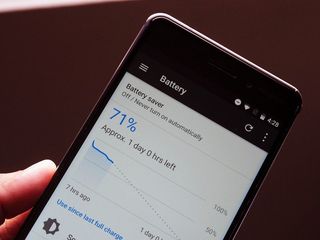
Xiaomi is also promising to roll out timely updates for its Android One device, the Mi A1, but we'll have to wait a few months to find out if the Chinese company can deliver on its word. Motorola used to be great at delivering updates consistently, but with a vastly expanded portfolio of devices, the company is no longer able to do that.
Simply put, if you care about updates — both platform versions and monthly patches — then the Nokia 6 is the device to get in the budget segment.
Camera
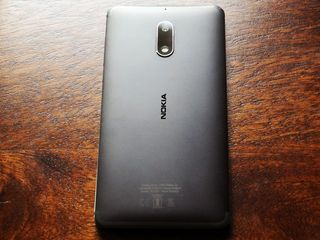
The 16MP camera on the Nokia 6 is better than most phones in this segment. The Moto G5 Plus is still the standout in this category when it comes to imaging prowess, but the Nokia 6 can hold its own next to the likes of the Redmi Note 4 and the Honor 6X. The phone comes with HMD Global's own camera app, which has blue accents at the top and bottom. You get toggles for the timer, flash, HDR, and switching between shooting modes and the front and rear cameras, and a button to access the camera settings.
The main problem with the camera is how long it takes to shoot images. There's a noticeable lag when you press the shutter button to the time it takes for the image to save in the gallery, particularly when using HDR.







As for the images themselves, photos taken in daylight conditions come out with plenty of detail, but low-light shots are devoid of colors.
Bottom line

The Nokia 6 is available for $229, or ₹14,999 if you're in India. While the device has a lot going for it — particularly when it comes to the design and updates — the Snapdragon 430 is a major letdown. The performance is just not as fluid as what you get on the dozens of Snapdragon 625-powered devices in this segment.
The Xiaomi Mi A1, for instance, costs the same and has a premium design aesthetic, stock Android with the promise of quick updates, and a dual camera that's better than what you get on the Nokia 6. The Moto G5 Plus similarly continues to be one of the best options in the budget segment, and you get a clean software experience along with the best camera on a budget device. Then there's the Moto G5S Plus, which builds on the foundations of the Moto G5 but with a dual camera at the back.
If you're looking to pick up a budget Nokia with a Snapdragon 600-series chipset, you may not have to wait long. The Nokia 7 made its debut in China earlier this month, and the phone should be heading to other markets shortly. The Nokia 7 is powered by the Snapdragon 630, and should hopefully fix the performance issues plaguing the Nokia 6.

Harish Jonnalagadda is a Senior Editor overseeing Asia at Android Central. He leads the site's coverage of Chinese phone brands, contributing to reviews, features, and buying guides. He also writes about storage servers, audio products, and the semiconductor industry. Contact him on Twitter at @chunkynerd.